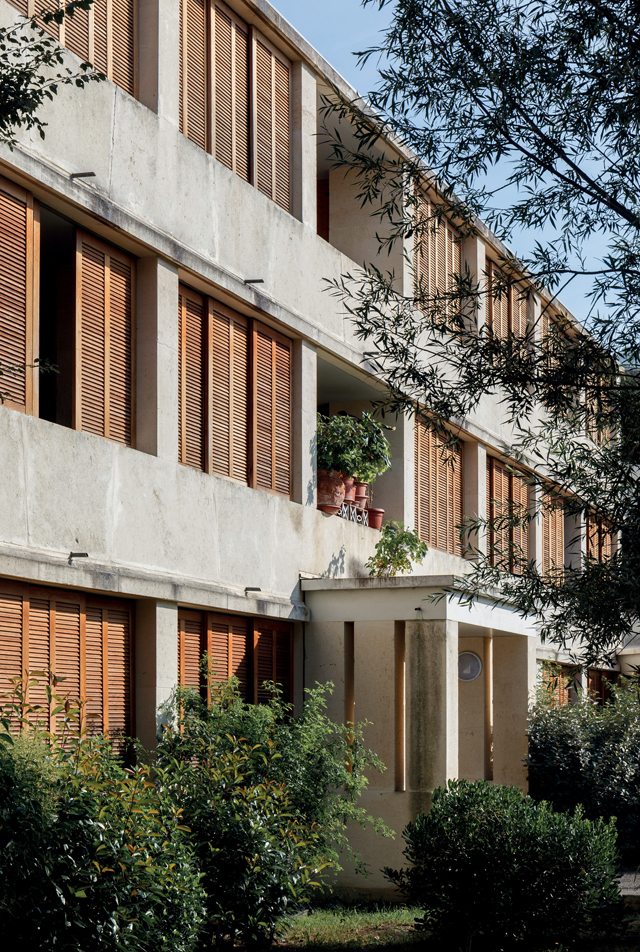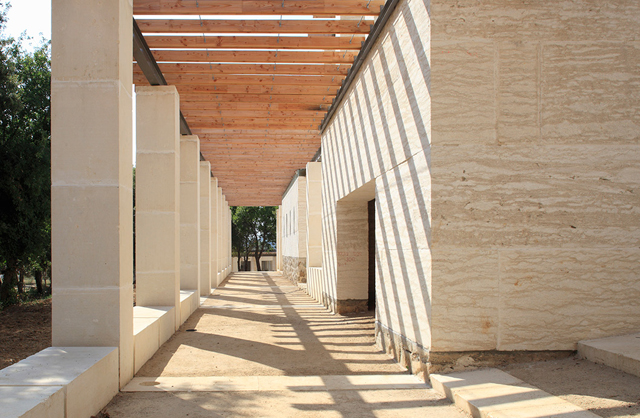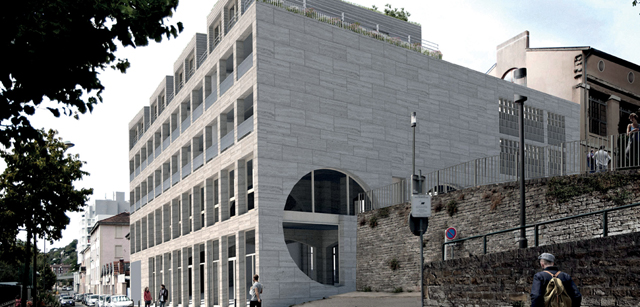STONE IN NEW APPLICATIONS

Cassette ceiling in Abu Ghosh
Another exhibit of the exhibition is a prototype of “flat vault” suspended at the ceiling. It illustrates the possibility of joining thin stone slabs into a panel of three times three metres. Taha is currently working on a project of a private house where his plan is to create, using the same construction principle, 12 metres wide ceiling without any load-bearing columns.
At the exhibition, a whole lot of other examples of stone application, as constructional elements realized around the whole world, was introduced next to Taha’s designs. One of the most interesting ones comes from Palestine. In the construction, the designers, Elias and Yousef Anastas, in cooperation with stonemasons from the Western Bank of Jordan, have used forgotten parts of traditional techniques. Their newest project of the expansion of a 12th century Abu Ghosh monastery near Jerusalem is remarkable for its unusual cassette ceiling composed of 169 interlocking blocks. The authors have been inspired by a technique patented by Joseph Abeil, a French engineer from the 17th century, who, in 1699, came up with the idea of a flat vaulted roofing, where the loading can be distributed thanks to oblique geometry of the blocks.
Other interesting projects of the Perraudin Architecture design office were also at display. Starting with social housing by Toulouse built out of limestone blocks of 40 cm, ending with a design of a twenty-floor stone tower in Switzerland. Also, the experimental Spanish Ensemble Studio introduced an enchanting project of a house Ca’n Terra in an abandoned quarry on Menorca. Also, the building of the Delas Frères winery, in the Rhôna river valley, was at display. It was designed by Carl Fredrik Svenstedt. The following issue of our series “found on the internet” in this volume of our magazine Kurier Kamieniarski.

The exhibition, unfortunately, ended in May. But taking in mind the admirable energy of its creators, we can surely hope for other projects and exhibitions. A distinct positive effect of the exhibition is also the fact that other designers started to see the potential of stone, not only as a decorative element but also as a construction material.


For the stonemasonry industry, the recognition of structural properties of stone can have a ground-breaking importance. There will still be obstacles on this path to overcome. In some European countries (such as in France), stonemasons are schooled not only in decorative properties of stone but also in its constructional properties. Already today, the educational programmes for engineers who design buildings, do not take stone into consideration. Quarries usually have certain approved certificates of hardness for stone. But the use of stone for constructional purposes is almost unknown among architects. Nevertheless, these are techniques that have been used for centuries. Their rightness has been proved by many proofs from our environs. All that will be necessary in the education of new generation of designers, will be just to dust off the experience from the past.
In an interview, Amin Taha said: “The tastelessness of concrete is based in the fact that you take limestone, you grind it, and burn it, in which process it loses 60 % of its structural strength.” That is why you have to put steel reinforcements inside. This is totally mad.”
It is impossible not to agree with that.
1) The carbon footprint – the overall sum of emissions of greenhouse gases caused directly or indirectly by an individual, organisation, an event or a product. It is a kind of an ecological footprint. The carbon footprint includes the emissions of carbon dioxide, methane, nitrous oxide, and other greenhouse gases (GHG) expressed in the equivalent of CO2. The equivalent of carbon footprint is tCO2e – a tonne of an equivalent of carbon dioxide.
Different greenhouse gases contribute to the global warming in different measure and the equivalent of carbon dioxide enables to compare the influence of different emissions of gases on a common scale (pl.wikipedia.org).
Source: Kurier Kamieniarski
Author: Kurier Kamieniarski | Published: 13.7.2020
